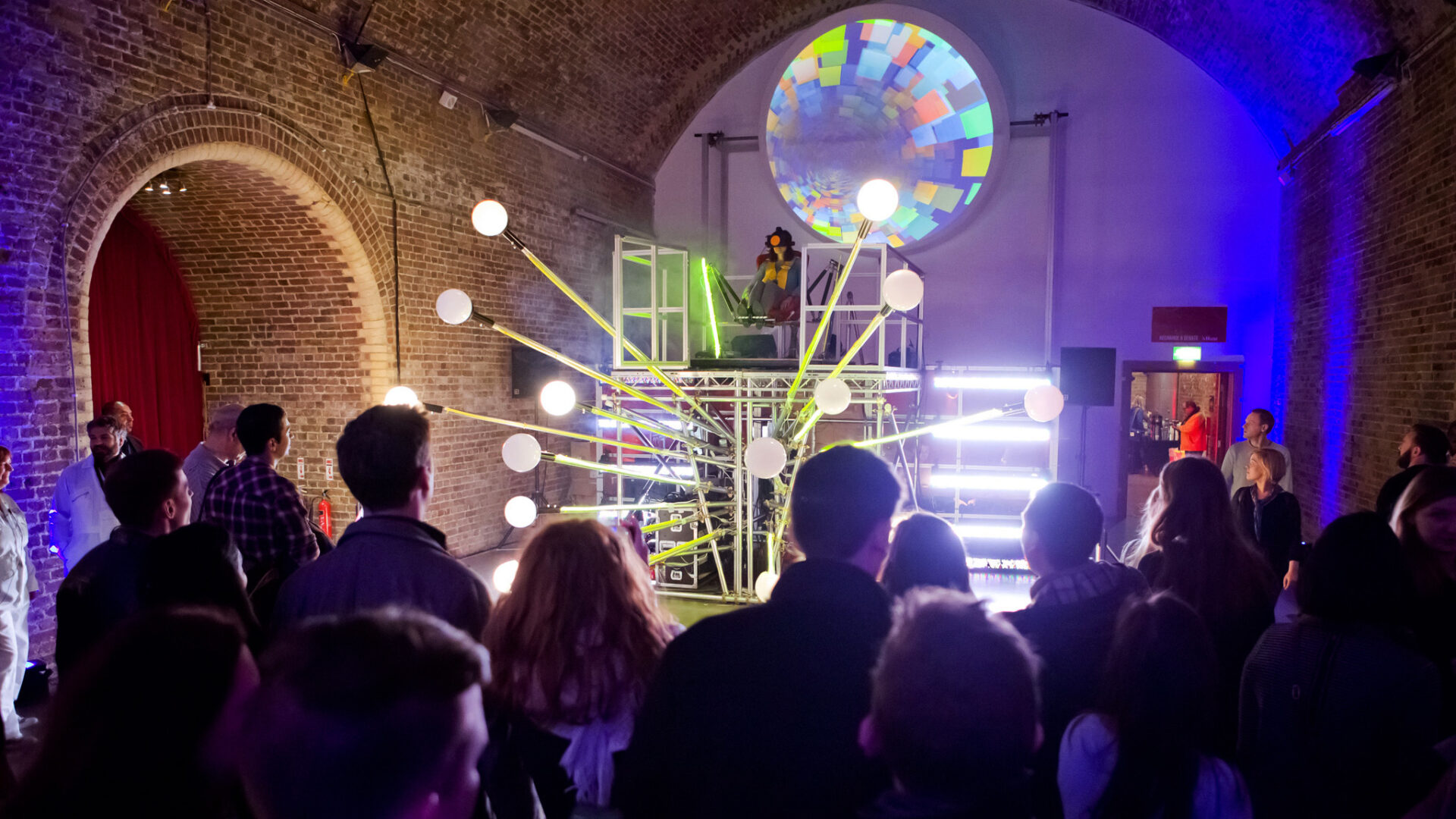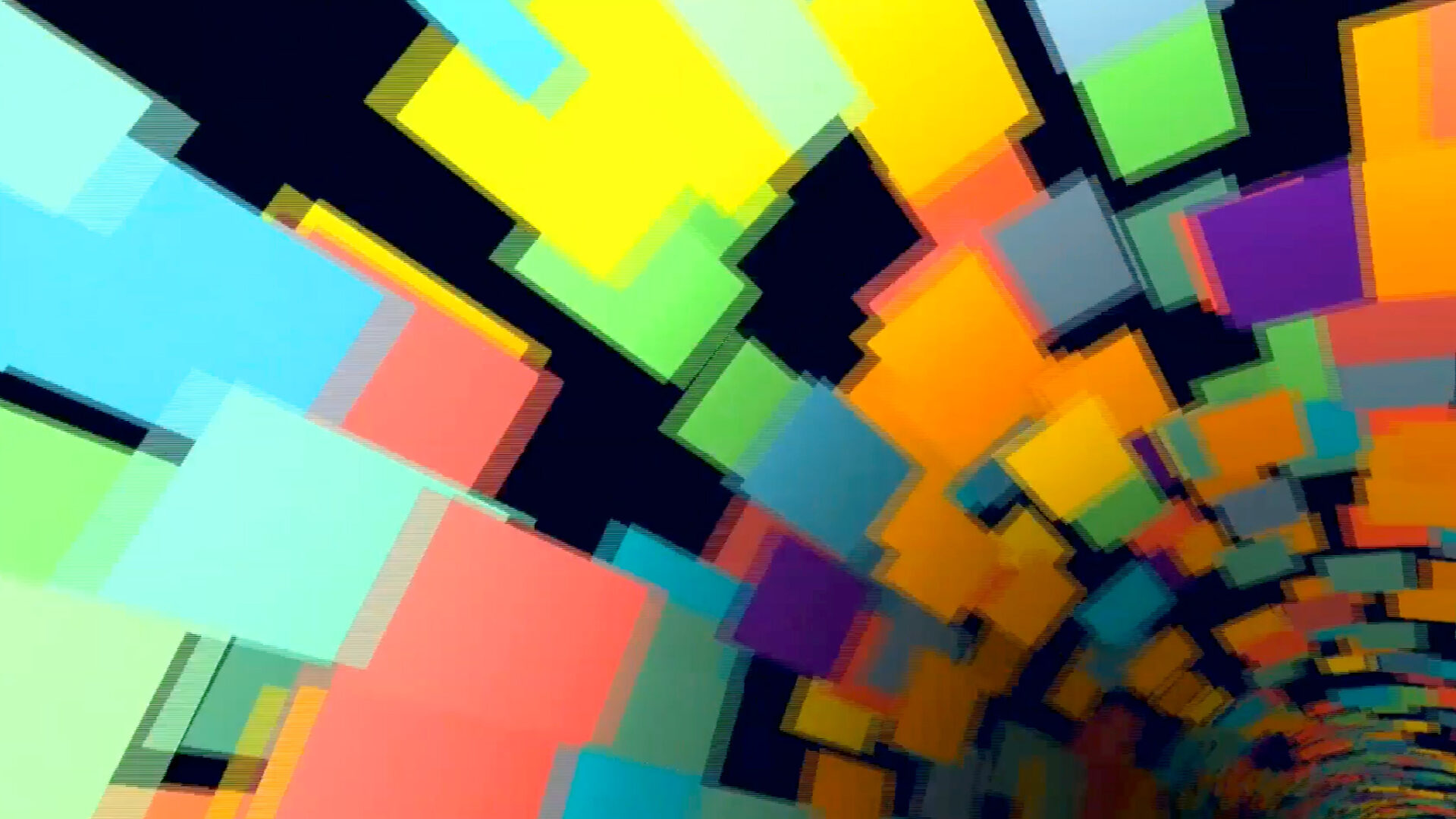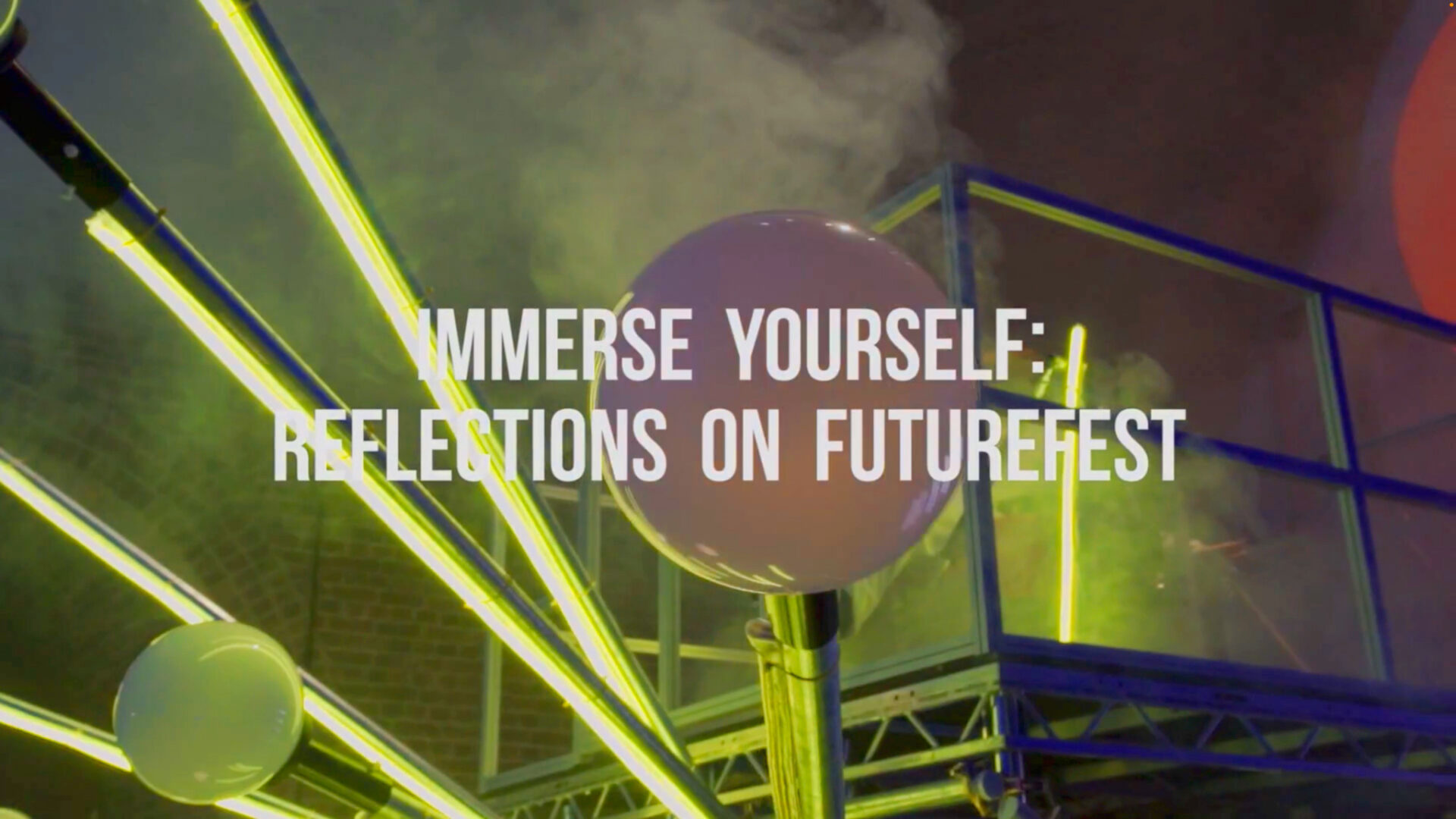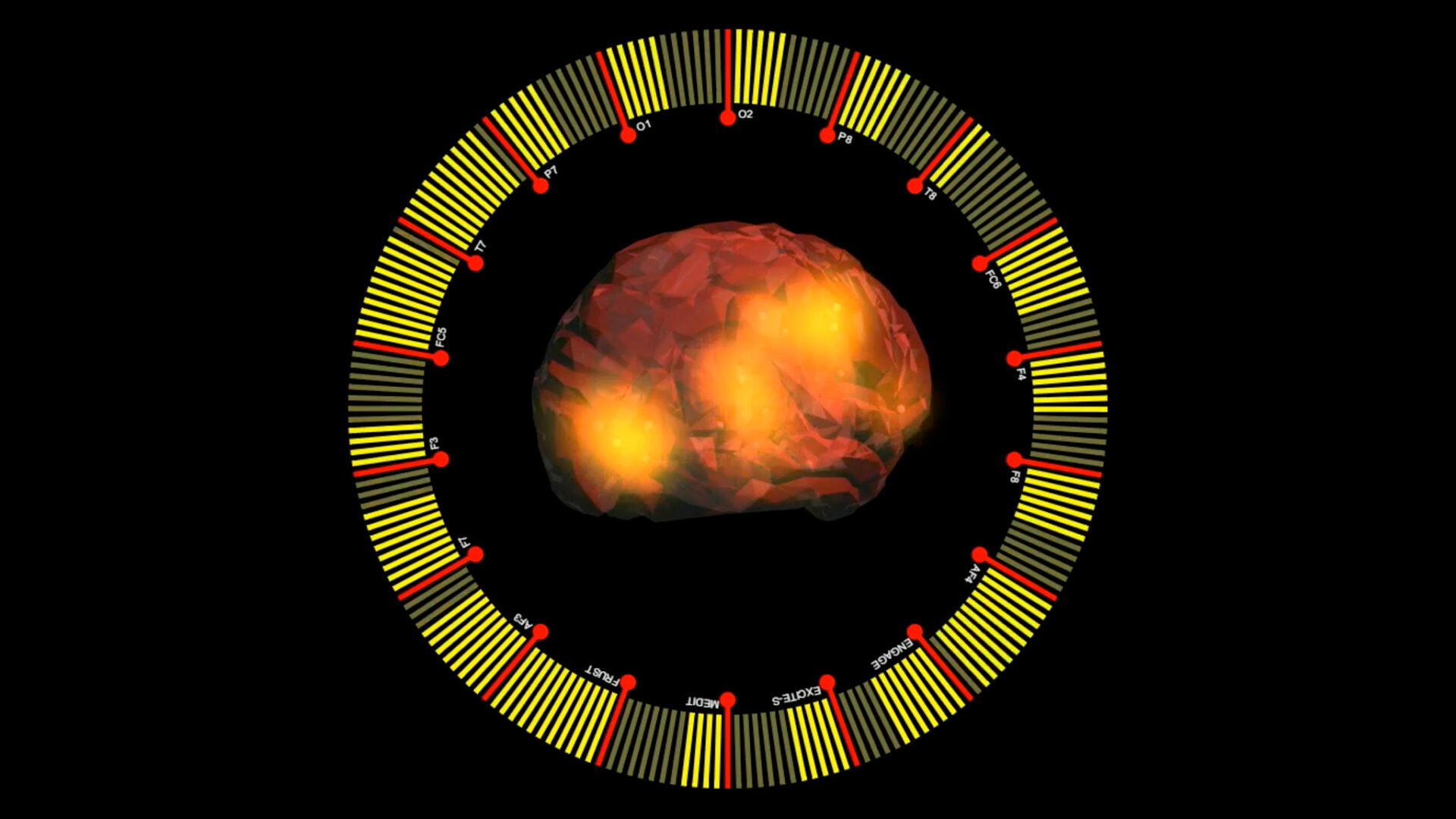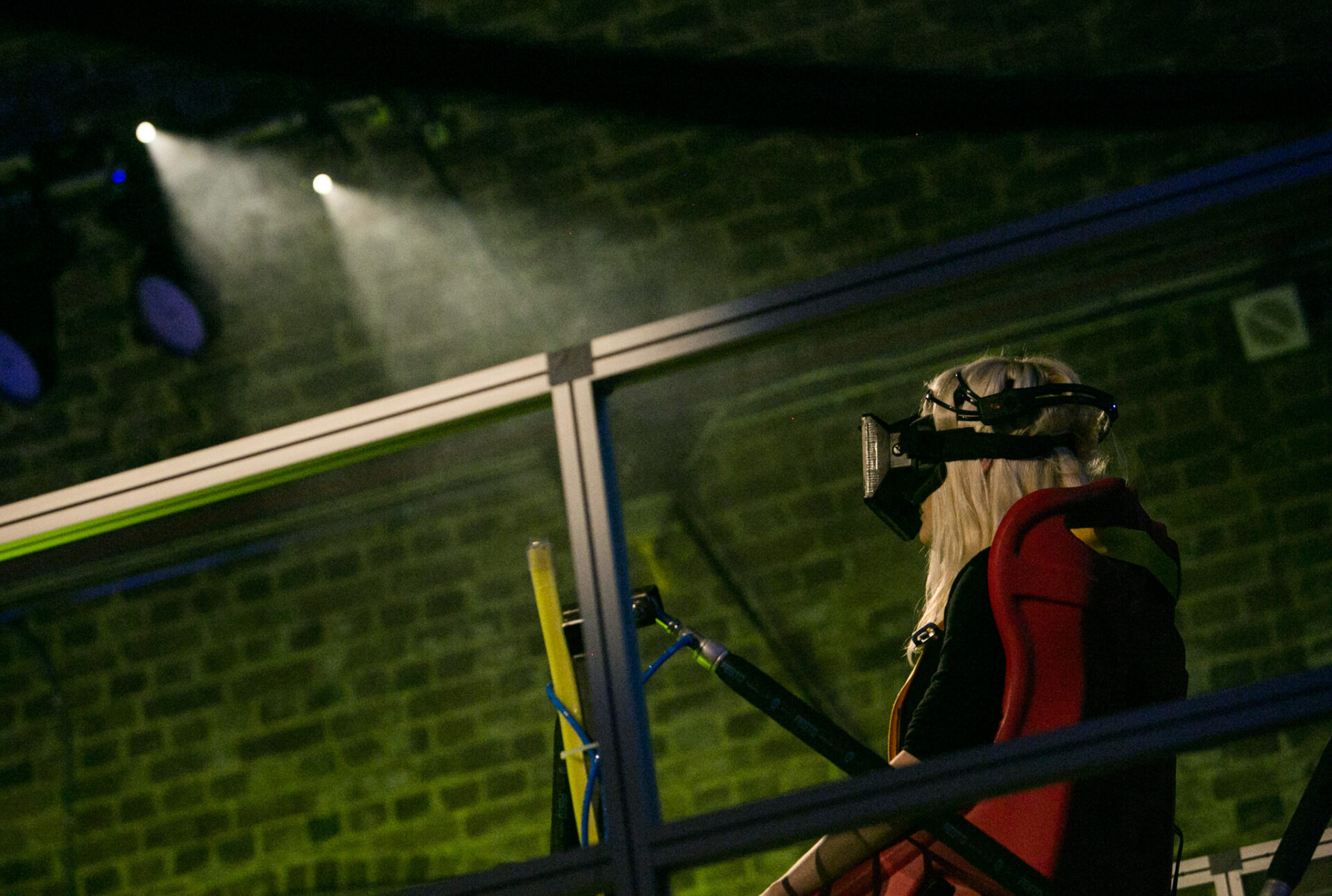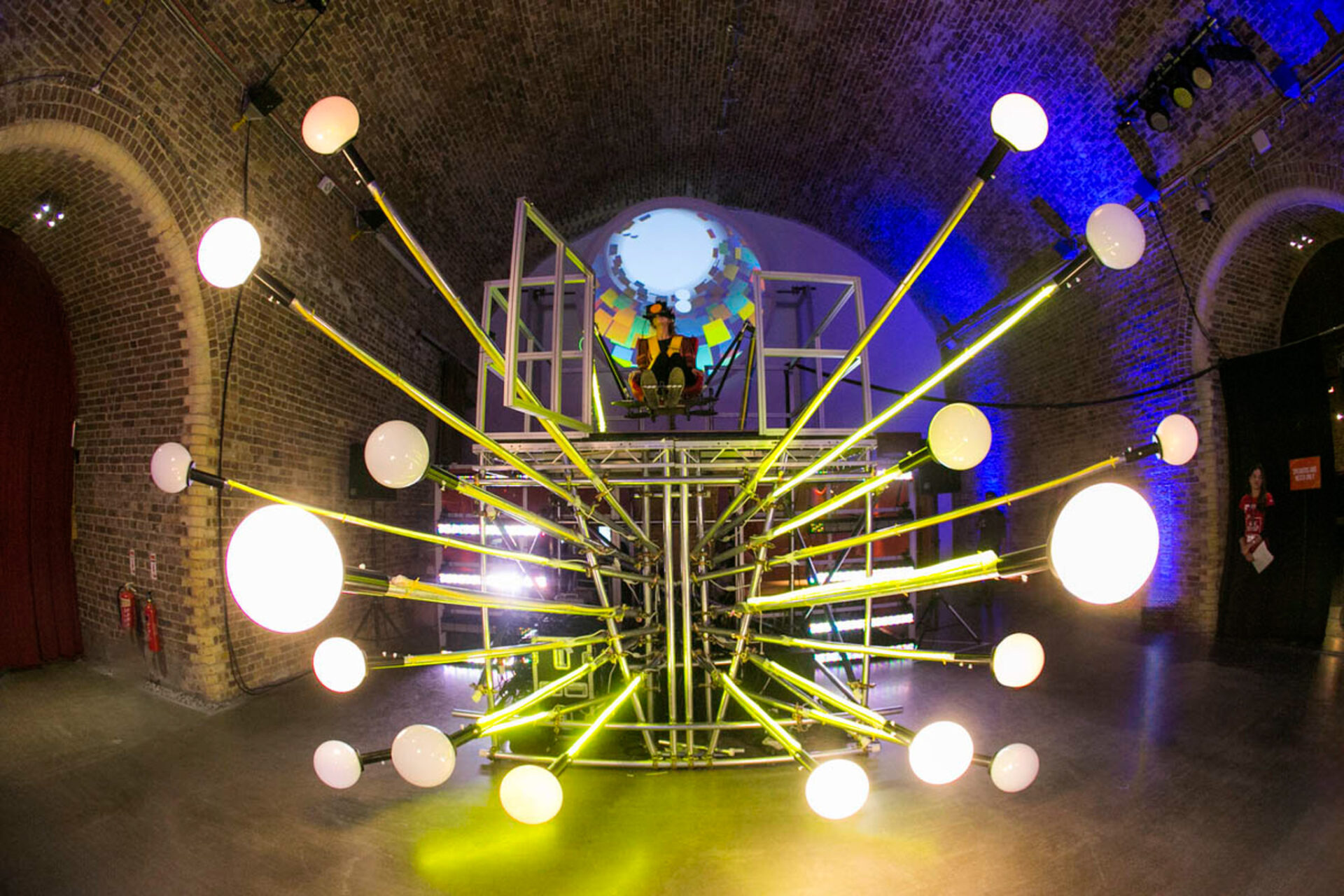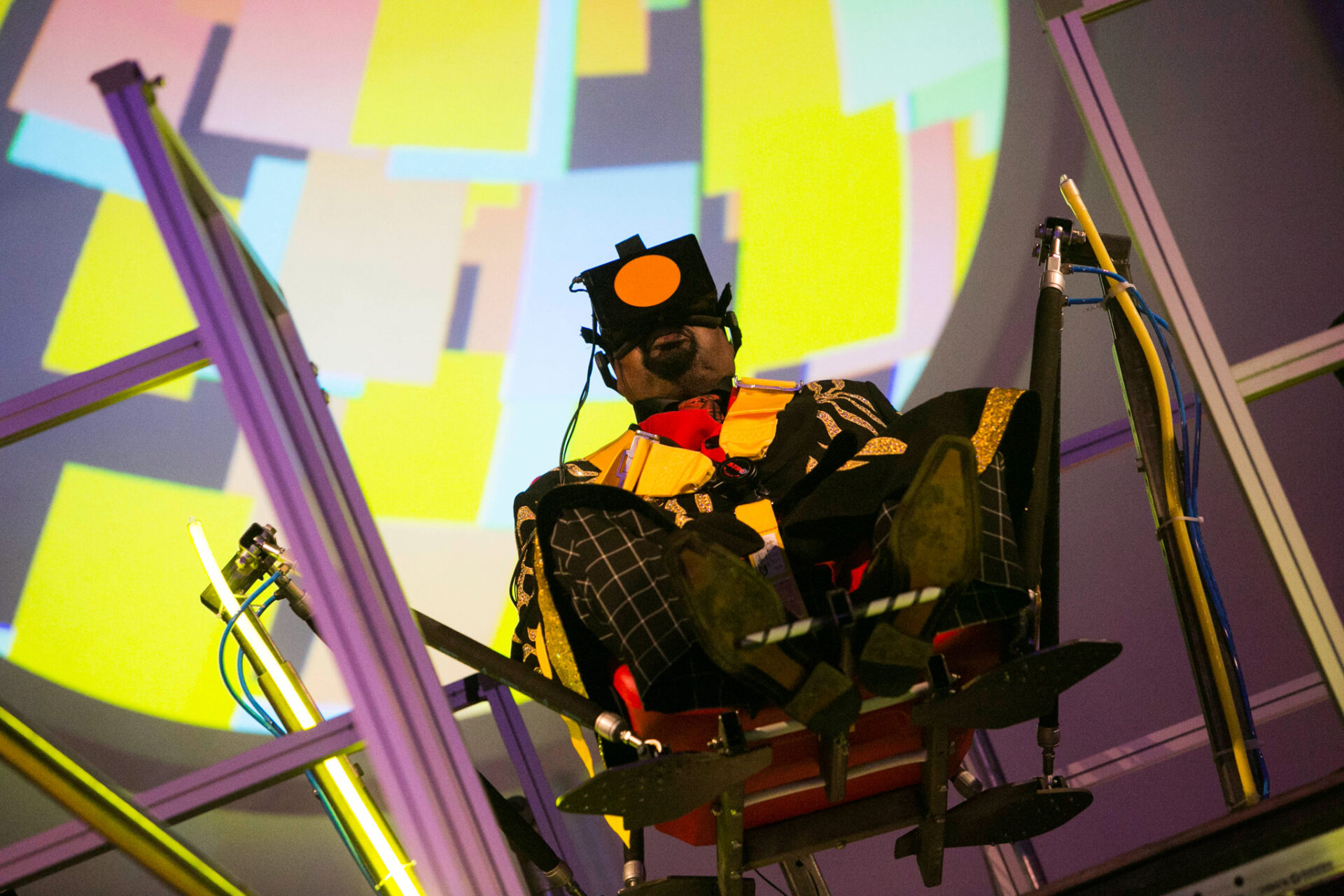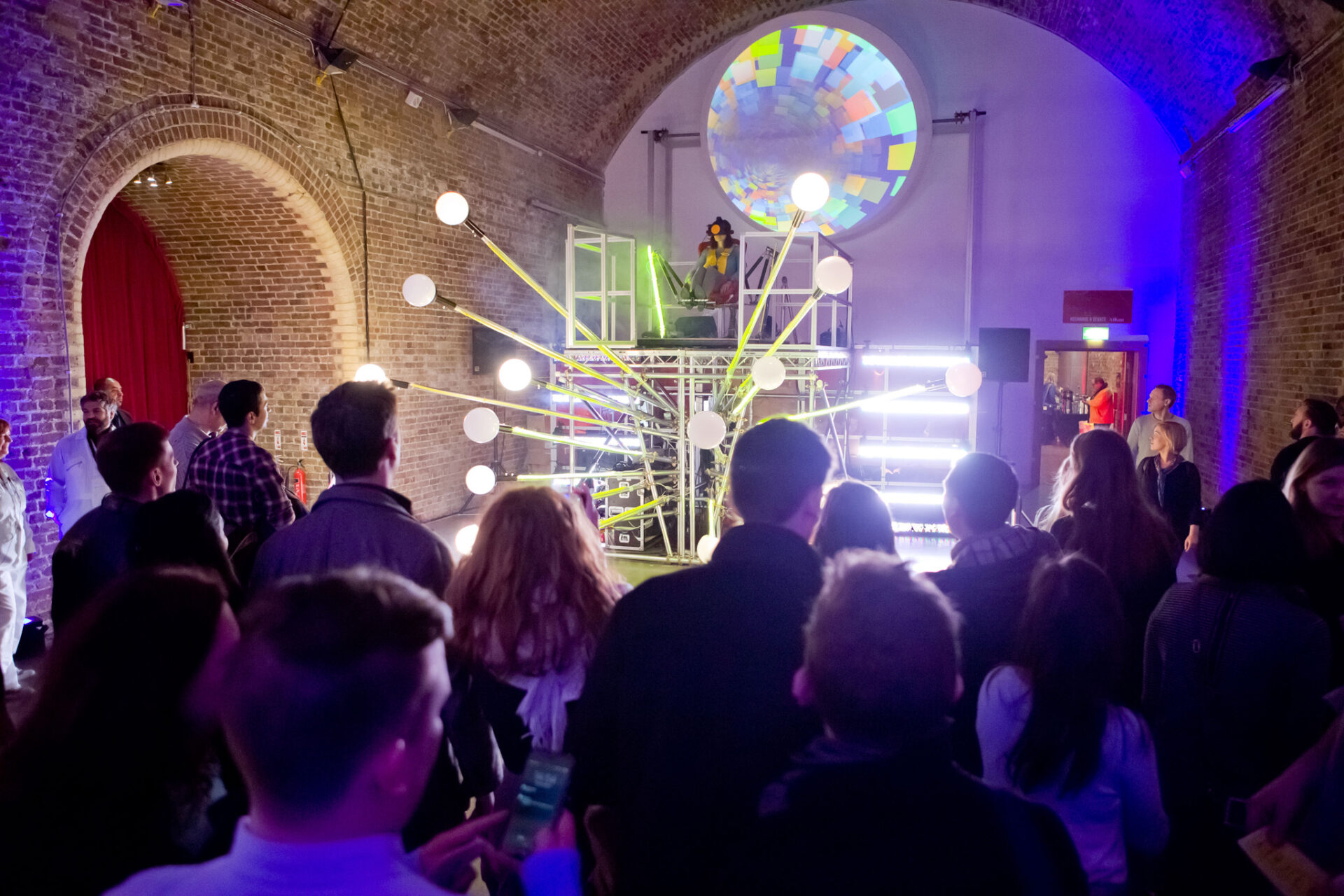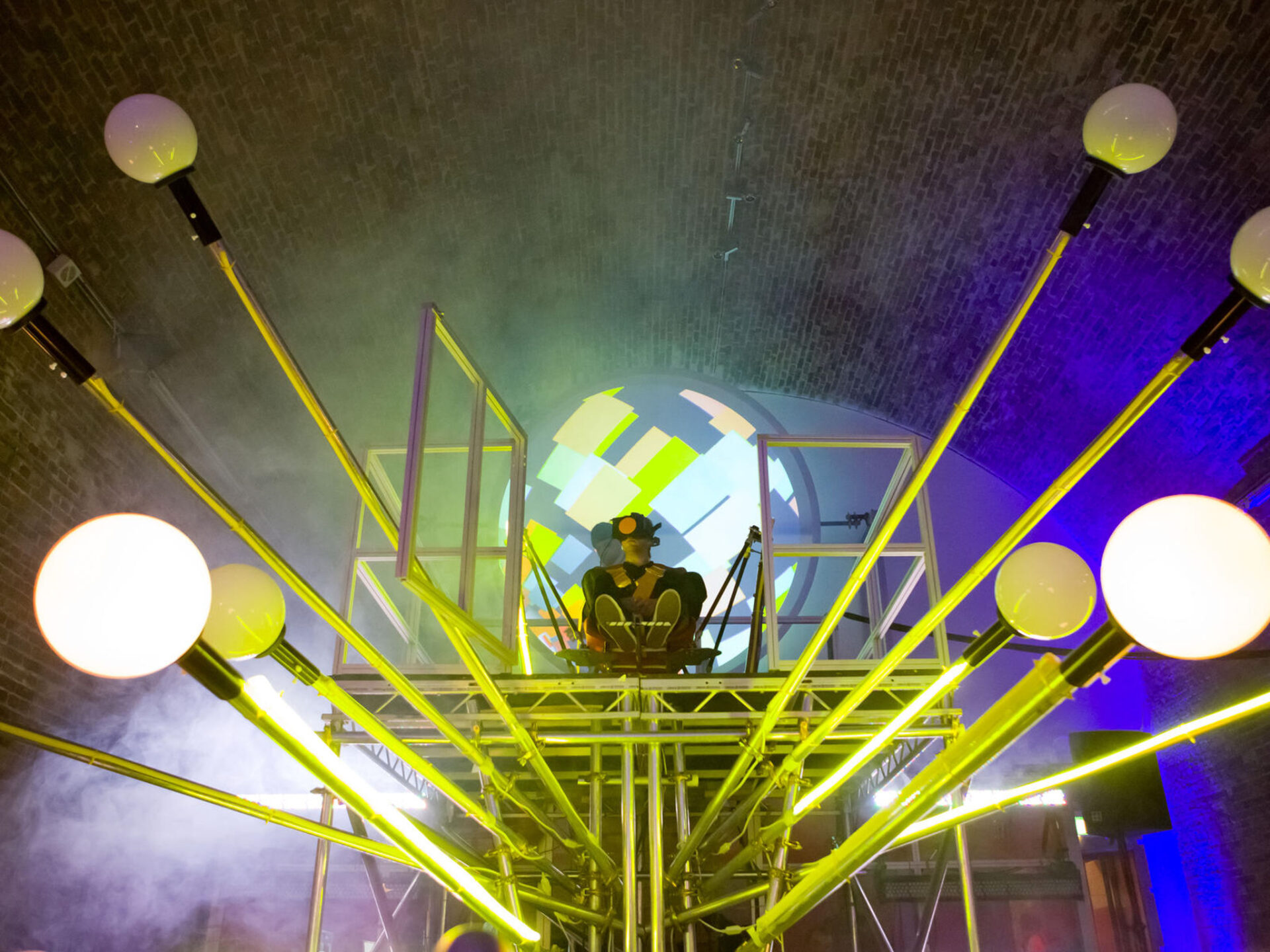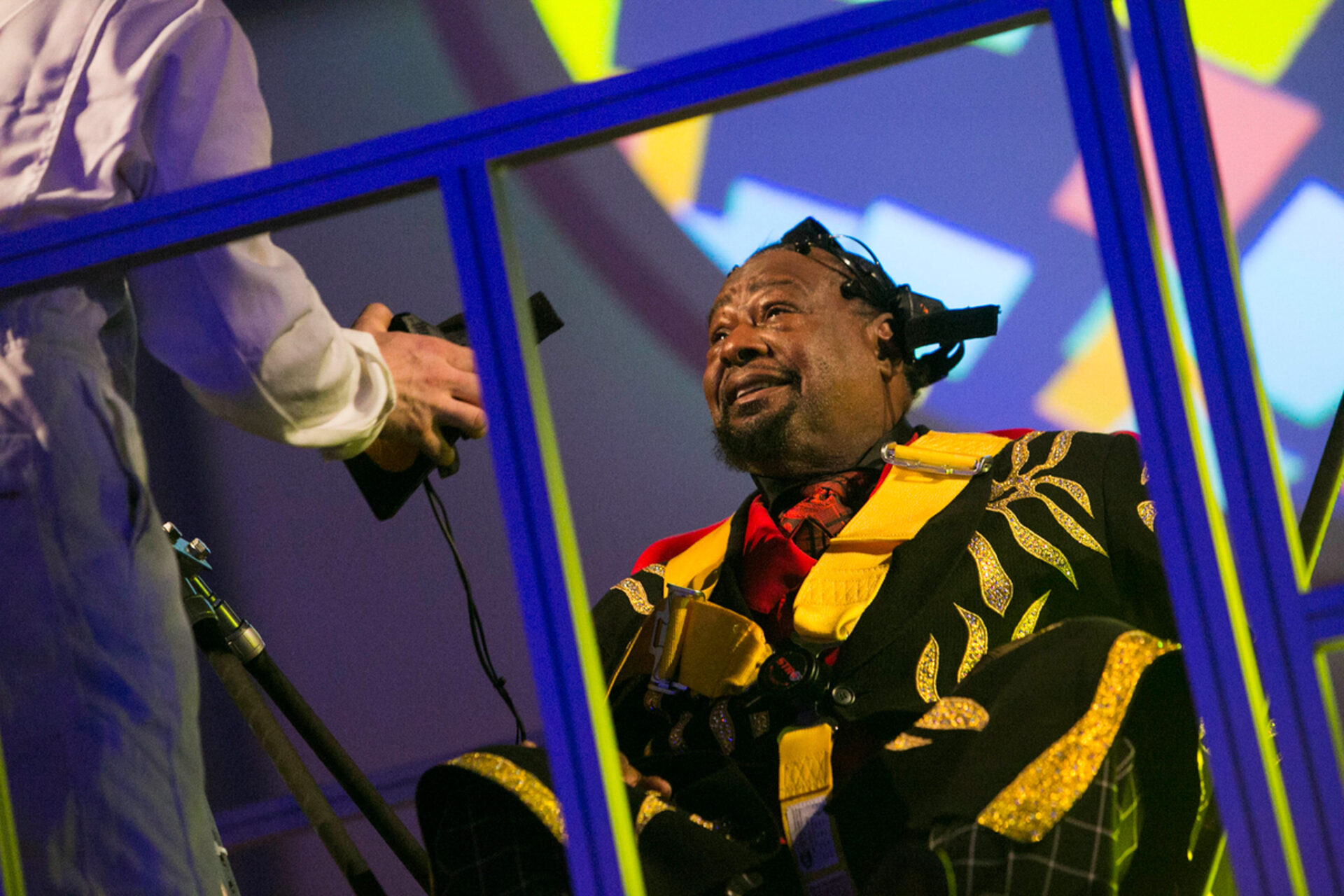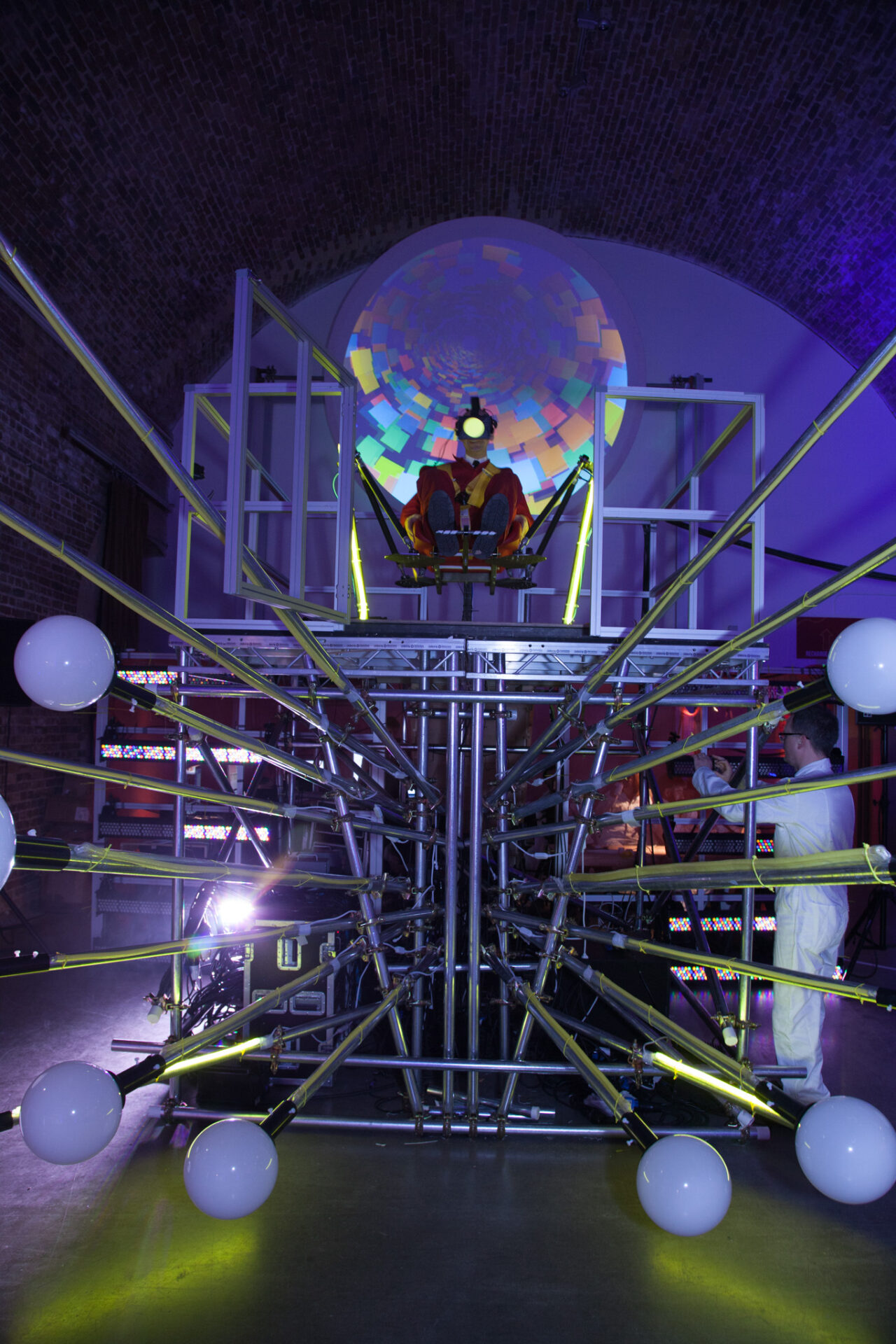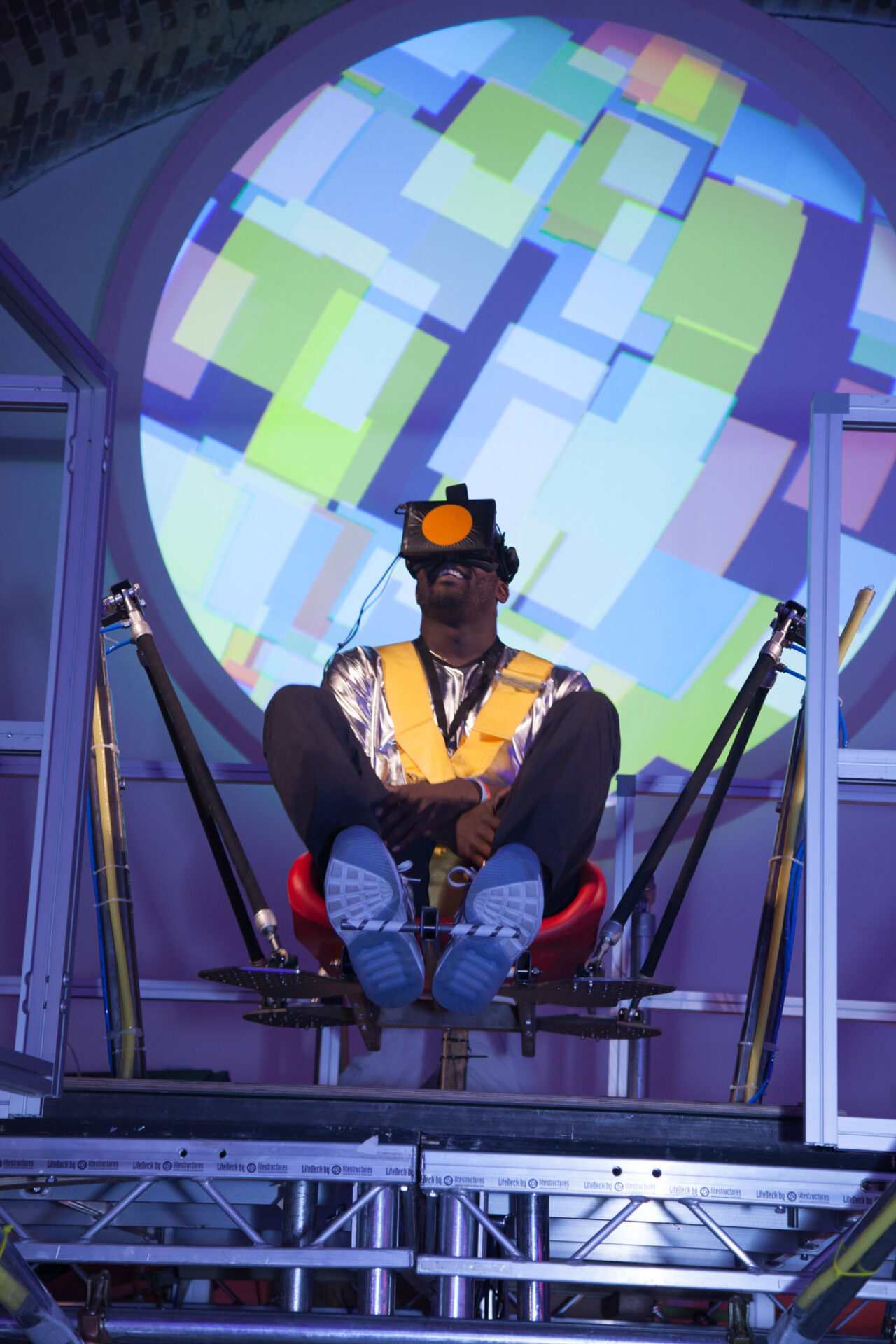2050. Fairgrounds are no longer restrained by corporeality. They have become a neurological playground designed to support cerebral fantasies, limited only by the imagination of their punters.
The fairground as a place for social, cultural, physical and emotional exploration remains intact, but white knuckle rides have been side lined as historic spectacles. The latest generation of riders doesn’t come to the fair to be seen experimenting with their bodies, but with their minds.
NEUROSIS is a ride born from critical design. It features a 6-degree of freedom motion simulator and VR headset to immerse the rider in a surreal virtual environment, controlled not by a ride operator, but by the rider’s own neurological feedback. However, their experience isn’t solely introspective; it is also a performance for other punters. Fairground lighting displays real-time neurological activity; the simulator mechanics undulate and sway; and the music pumps; all set against the backdrop of fairground artwork depicting futuristic neurological fantasies.
The rider’s neurofeedback is used to drive generative artwork in a virtual world. A ribbon track emerges, transporting our rider, twisting and twirling through a psychedelic landscape. The rider’s neurological patterns change in response to the music being heard, and the ride sensations they feel. But the rider has some control over their destiny by simply imagining – if they can – swooping left and right, up and down.

